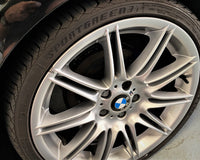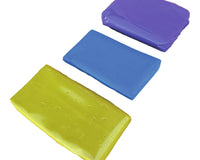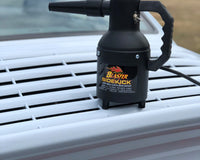When it comes to maintaining your vehicle's appearance, the debate between touchless car washing and traditional detailing continues to divide car owners. Both methods offer distinct advantages, but understanding their fundamental differences is crucial for making an informed decision about your car care routine. This in-depth examination explores every aspect of these cleaning approaches, helping you determine which solution best suits your vehicle's needs and your personal preferences.
Understanding Touchless Car Washing Technology
Touchless car washing represents a modern approach to vehicle cleaning that eliminates physical contact with the car's surface. These automated systems employ a sophisticated combination of high-pressure water jets and specially formulated cleaning agents to remove dirt and grime. The process begins with a pre-soak application that loosens surface contaminants, followed by powerful water streams that rinse away debris without the need for brushes or sponges.
The technology behind touchless systems has evolved significantly in recent years, with many facilities now incorporating advanced features like reverse osmosis water filtration for spot-free rinsing and infrared drying systems. These innovations allow for a remarkably thorough clean while maintaining the integrity of your vehicle's paintwork. The absence of physical contact makes this method particularly appealing for owners concerned about swirl marks or micro-scratches that can occur with traditional washing techniques.
The Traditional Detailing Process Explained
Traditional car detailing remains the gold standard for vehicle care, offering a level of attention that automated systems simply cannot match. This hands-on approach involves multiple stages of cleaning, correction, and protection, typically performed by skilled professionals. The process begins with a meticulous hand wash using specialised tools and techniques designed to minimise the risk of surface damage.
Following the initial wash, detailers often employ clay bar treatments to remove embedded contaminants that regular washing misses. The most significant advantage of traditional detailing lies in its ability to address paint imperfections through machine polishing, which can effectively remove swirl marks, light scratches, and oxidation. The final stage involves applying protective products like high-quality waxes or ceramic coatings that can preserve the vehicle's appearance for months. This comprehensive approach not only cleans but actually enhances the vehicle's exterior, often producing results that surpass the car's original showroom condition.
Comparing Cleaning Effectiveness
When evaluating cleaning performance, traditional detailing consistently outperforms touchless systems for several key reasons. The hands-on approach allows for targeted treatment of problem areas, enabling detailers to address stubborn contaminants like tree sap, tar spots, or industrial fallout that automated systems often struggle with. Traditional methods also provide superior results on intricate surfaces, thoroughly cleaning areas around badges, trim pieces, and wheel arches that touchless systems may miss.
However, touchless washing does offer respectable cleaning power for regular maintenance, particularly when dealing with light to moderate dirt accumulation. The high-pressure water jets can effectively remove loose debris, road salt, and light grime, making them a practical solution for between-detailing maintenance. The cleaning chemicals used in touchless systems have also improved significantly, with many now featuring advanced formulations that break down contaminants more effectively than earlier versions.

Impact on Paint Protection and Longevity
The effect on your vehicle's paint protection varies dramatically between these two methods. Traditional detailing not only cleans but actually enhances paint protection through the application of high-grade waxes, sealants, or ceramic coatings. These products create a durable barrier against environmental contaminants, UV radiation, and minor abrasions, significantly extending the life of your paintwork. Many professional detailers also perform paint correction as part of their service, removing existing imperfections and restoring the surface to optimal condition.
Touchless washing, while gentle on existing protection, offers no additional protective benefits. The chemicals used in some touchless systems may gradually degrade wax or sealant layers over time, though newer formulations are becoming more compatible with various protection products. For vehicles with ceramic coatings, touchless washing can be an excellent maintenance solution between professional applications, as it minimizes physical contact that could potentially compromise the coating's integrity.
Time Investment and Convenience Factors
The convenience factor clearly favors touchless washing systems, which can complete a thorough clean in just 5-10 minutes without any effort from the vehicle owner. This makes them ideal for busy individuals who need to maintain their vehicle's appearance but lack the time for more intensive cleaning methods. Many touchless facilities operate 24/7, offering unparalleled accessibility compared to traditional detailing services.
Traditional detailing requires a significantly greater time investment, with basic services typically taking 2-4 hours and comprehensive packages often occupying an entire day. This time commitment reflects the meticulous nature of the work, as each stage of the process demands careful attention to achieve optimal results. While mobile detailing services have improved accessibility somewhat, scheduling still requires more planning than simply visiting an automated wash bay.
Cost Considerations and Value Proposition
The financial aspect of this comparison reveals significant differences between the two approaches. Touchless washing represents the more economical choice for regular maintenance, with prices typically ranging from £5-£15 per wash depending on location and service options. This makes frequent cleaning more accessible for budget-conscious owners who still want to protect their investment.
Traditional detailing commands substantially higher prices, with basic packages starting around £50 and full correction and protection services often exceeding £500. While this represents a significant investment, the value proposition becomes clearer when considering the comprehensive nature of the service and the long-term protection it provides. Many detailing professionals argue that the higher initial cost pays for itself through reduced need for frequent washing and better preservation of the vehicle's resale value.
Environmental Impact Assessment
The ecological implications of these cleaning methods present an important consideration for environmentally conscious vehicle owners. Touchless systems have made notable strides in water conservation, with many modern installations featuring advanced recycling systems that dramatically reduce water consumption. Some estimates suggest that professional touchless facilities use less water per wash than even the most careful hand washing techniques.
Traditional detailing can be more resource-intensive, particularly when performed without water-saving measures. However, many professional detailers now employ waterless or rinseless washing techniques for maintenance cleaning, significantly reducing their environmental footprint. The longevity of protection provided by professional detailing also contributes to its environmental credentials, as properly maintained vehicles require less frequent washing overall.
Making the Right Choice for Your Vehicle
Determining which method suits your needs depends on several factors including your vehicle's condition, your available time, and your long-term maintenance goals. For daily drivers and commuter vehicles that accumulate regular dirt but don't require showroom perfection, touchless washing provides an excellent balance of convenience and effectiveness. The reduced risk of surface damage makes it particularly appealing for newer vehicles with factory paint jobs.
High-value, luxury, or classic vehicles typically benefit more from traditional detailing's comprehensive approach. The ability to correct existing imperfections and apply long-lasting protection makes detailing particularly valuable for preserving these investments. Many owners of premium vehicles opt for a hybrid approach, using touchless washing for regular maintenance between periodic professional detailing sessions.
Professional Recommendations for Optimal Care
Automotive care specialists generally advise a balanced approach that leverages the strengths of both methods. For most vehicles, they recommend touchless washing every 1-2 weeks to maintain cleanliness between more intensive treatments. Professional detailing should be scheduled every 3-6 months depending on driving conditions and environmental factors, with additional spot treatments as needed for specific issues like bird droppings or tree sap.
This combined strategy offers several advantages. It minimizes the risk of swirl marks that can accumulate with frequent contact washing while ensuring thorough periodic cleaning and protection. The regular touchless washes help preserve the effects of professional detailing by preventing the buildup of contaminants that could degrade protective coatings. Many detailing professionals note that vehicles maintained on this type of schedule often show significantly better long-term appearance and require less corrective work during detailing sessions.
Future Developments in Vehicle Cleaning
The car care industry continues to evolve, with innovations emerging in both touchless and traditional cleaning methods. Touchless systems are incorporating more advanced sensor technology to customize cleaning patterns for different vehicle shapes and sizes. New chemical formulations promise even better cleaning performance while remaining gentle on various paint protection products.
Traditional detailing is also seeing technological advancements, particularly in the areas of paint correction and protective coatings. New ceramic coating formulations offer longer durability and easier application, while improved polishing compounds and pads allow for more precise correction with less material removal. These developments suggest that both cleaning approaches will continue to offer valuable solutions for different aspects of vehicle maintenance.
Final Thoughts on Choosing Your Cleaning Method
The choice between touchless washing and traditional detailing ultimately depends on your specific circumstances and priorities. Touchless systems provide unmatched convenience and safety for regular maintenance, while traditional detailing delivers unparalleled results for comprehensive cleaning and protection. For most vehicle owners, the ideal solution lies in combining both approaches according to their vehicle's needs and their personal maintenance preferences.
By understanding the strengths and limitations of each method, you can develop a car care routine that keeps your vehicle looking its best while protecting your investment for years to come. Whether you prioritize convenience, perfection, or a balance of both, today's cleaning options offer solutions to meet virtually any need and budget in vehicle maintenance.




